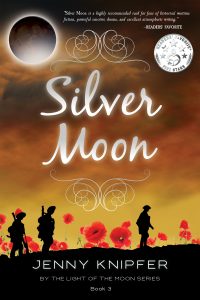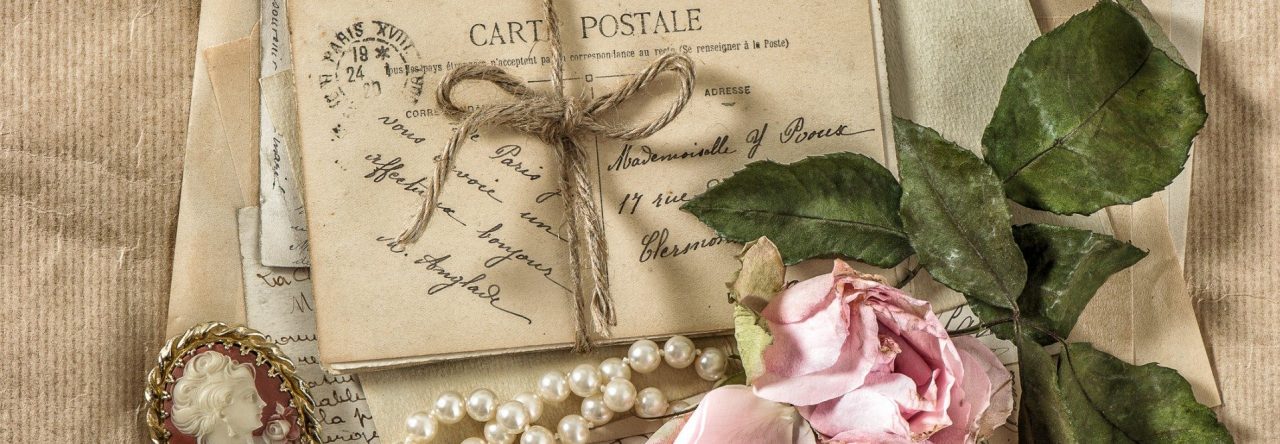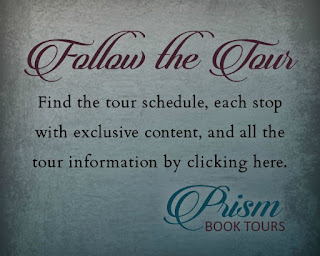
On Tour with Prism Book Tours
I’m thrilled to host an excerpt of Silver Moon, by Jenny Knipfer, today as part of it’s tour with Prism Book Tours.
Before you leave don’t forget to enter the Rafflecopter giveaway at the bottom of the page! One lucky winner will receive an eBook copy of the entire By the Light of the Moon series and a $25 Amazon eGift card.
Before the excerpt here’s a little bit about the book.
About Silver Moon
A tale of courage and hope in the darkest of times…
 Silver Moon, the third book in the series: By the Light of the Moon, paints a stunning and poignant picture of life on the home front in Webaashi Bay, Ontario, and of three men who are a part of the Canadian Expeditionary Force during WWI.
Silver Moon, the third book in the series: By the Light of the Moon, paints a stunning and poignant picture of life on the home front in Webaashi Bay, Ontario, and of three men who are a part of the Canadian Expeditionary Force during WWI.
Shamed into joining the war, the tide turns for Luis Wilson when he is steered into the depths of espionage. Injured and presumed missing, will he lose his heart to the very woman who presented him with a white feather?
Oshki and Jimmy offer a grim perspective on life in the trenches. They despair of ever returning home to the women who hold their hearts.
Meanwhile, Lily fights for the cause in her own way and rallies the female troops at home as prejudices run high and the local cafe owner is accused of being a spy.
Will the women of Webaashi Bay receive their men back unscathed? Can the power of love win out over insurmountable odds? All this drama and more plays out under the light of a silver moon.
Fans of WWI historical fiction, Christian historical fiction, and literary fiction will find Silver Moon a moving, powerful read!
Praise for the Book
Taking an original angle on a tumultuous time in history, Silver Moon by Jenny Knipfer is a sparkling slice of historical fiction. Ambitiously detailing a diverse collection of characters, this World War I story bounces across space and time, delicately filled with vivid descriptions, nuanced moral dilemmas, and authentic relationships…” —Self-publishing Review
“Silver Moon is a highly recommended read for fans of historical wartime fiction, powerful emotive drama, and excellent atmospheric writing.” —Readers’ Favorite
“I am stunned by the amount of detail the author gave in this single story. On one hand, we have powerful characters… and on the other, we have a plot that demands all our attention. Jenny Knipfer pulls no punches and holds nothing back.” —Readers’ Favorite
(Affiliate links included.)
Goodreads | Amazon | Barnes & Noble | Book Depository
Excerpt from Silver Moon
Late August 1916
Western Front Near Lille
Oshki tucked his last letter from home in his rucksack, threw it on his shoulder, grabbed his rifle, and followed the soldier in front of him towards another web of trenches. Part of his company, or what was left of it, were on their way north to beef up the line where an Allied attack was being planned. He and Lenny were the only ones left walking from their small squadron. The rest had been sent home, shipped to a field hospital to recover, or they had died. His mother was right when she told him he had to greet death often.
Like an unwanted guest come calling, he thought.
“On our way ta the next paradise.” The soldier ahead of him turned back to Oshki. “Been here long?”
Oshki eyed the man before him. Golly, he looks like he’s fifteen. “Been here mostly since last spring.”
“Me, I shipped in couple o’ months ago. Been pushed up the line some. Name’s Daithi, by the way. Daithi Sharney. Yers?”
“Oshki.”
“What kinda name is ‘at?”
“I’m Canadian. It’s Ojibwe.” Oshki rolled his eyes, kept walking, and took the lead.
“Injun, huh?”
“Anishinaabe, of The First People. My mother was a little less than half. Got some French and English floating around inside too.” Oshki gave the lad another look over. “What kinda name is Daithi?”
“’Tis the Irish form o’ David.”
“Ah.”
“Will you two quit yakkin’ and git movin’.” Lenny came up from behind Oshki and scolded them. “Seriously, you’re holdin’ up the line.”
Oshki kidded his chum. “Someone is in a hurry for the sight of new dirt.”
“Ha, ha.” Lenny swatted Oshki on the back. “Naw, it’s just nice to stretch my legs. They’ve gotten awful cramped up in our old terrain.”
Daithi scratched his chin. “Whar we marchin’ ta, ya think?”
“To our deaths, most like,” Lenny said, deadpan.
Oshki gave Lenny a dirty look. “You’re gonna scare him, Lenny.”
“What?” Lenny shrugged with an innocent look on his face.
Oshki eyed Daithi for a second time. “How old are you anyway?”
“Old enough.” Daithi’s face reddened.
“Just old enough ta be off your mamma’s tit, I’d say,” Lenny snickered.
“Ah, leave him alone.” Oshki growled a little this time.
“Well, we’re glad of fresh blood. It’s been getting thin over here.” “Come on, let’s just shut up and walk.”
Oshki tired of talking about what they’d lost, and he didn’t want to think about this young kid going the same way as all the others. He picked up his pace and put some distance between Lenny and Daithi.
He didn’t want to kid about dying, not today. He had in his mind that dying happened in the grime of the trenches, but not at home. Home was supposed to be safe, but death’s long arm had touched it all the same.
As he marched, Oshki really thought about dying and what it would mean…
Other Books in the Series


(Linked to Amazon affiliate links.)
About the Author

Jenny lives in Wisconsin with her husband, Ken and their pet Yorkie, Ruby. She is also a mom and loves being a grandma. She enjoys many creative pursuits but finds writing the most fulfilling.
Jenny’s education background stems from psychology, music, and cultural missions. She spent many years as a librarian in a local public library but recently switched to using her skills as a floral designer in a retail flower shop. She is now retired from work due to disability.
She authored and performed a self-published musical CD entitled, Scrapbook of a Closet Poet.
Jenny’s books, Ruby Moon, Blue Moon, and Silver Moon earned five-star reviews from Reader’s Favorite, a book review and award contest company. Their praise: “Ruby Moon is entertaining, fast-paced, and features characters that are real. Blue Moon continues a well-written and highly engaging saga of family ties, betrayals, and heartaches… Silver Moon is a highly recommended read for fans of historical wartime fiction, powerful emotive drama, and excellent atmospheric writing.”
She holds membership in the: Midwest Independent Booksellers Association, Historical Novel Society, Wisconsin Writers Association, Christian Indie Publishing Association, and Independent Book Publishers Association.
Jenny’s favorite place to relax is by the western shore of Lake Superior, where her novel series, By The Light of the Moon, is set. She has self-published the first three books, Ruby Moon, Blue Moon, and Silver Moon, in her four-part series. One more novel to complete the series is planned for 2020. She is currently writing a new historical fiction series called, Sheltering Trees.
Photo Credit: Craig Jentink
Website | Goodreads | Facebook | Twitter | Pinterest | Instagram
Tour Schedule
Click the image to see the complete list of tour stops for Silver Moon.
Tour Giveaway

One winner will receive eBooks of all three books in the By the Light of the Moon series by Jenny Knipfer (Ruby Moon, Blue Moon and Silver Moon) and a $25 Amazon eGift Card
Open internationally to those who can use one of Amazon’s branches
Ends September 9, 2020







